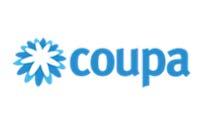Add-on Acquisitions: Recent Trends and Opportunity as an Exit Strategy
Published August 2020
In 2014, Vista Equity Partners took Advanced Computer Software Group (ACSG), a British cloud software company, private for $1.2 billion. After completing six acquisitions and an operational transformation, the fund succeeded in tripling the company’s enterprise value five years later through a successful “add-on” strategy.[i] These acquisitions are commonly known as “add-ons,” which are often done to create new synergies around a “platform” – ACSG in this case – that was initially identified by the fund.
The Rise of the Buy-and-Build Strategy
PE firms have increasingly adopted this strategy (“Buy-and-Build”) over the past decades, targeting middle market companies with plenty of room to grow. This contrasts with more standard methods of creating value via financial engineering to take advantage of tax reductions or improving governance to weed out subpar management.
Boston Consulting Group’s study of PE deals from 1998 to 2012 showed that the share of add-ons grew from 20% to 53% in that period.[ii] Within North America PE add-on deals increased from 52% in 2007 to 72% in the first half of 2020, with the COVID-19 situation adding extra fuel to the trend.[iii] As it was more difficult to acquire financing and arrange management meetings in the prior months, platform acquisitions would have been less appealing to PE investors.
The Multiple Arbitrage
Amid high market valuations,[iv] the Buy-and-Build approach can be appealing for PE firms. To begin, a platform company will have to be acquired. Many PE firms go to great depths to source promising platform companies, driving up their valuations and price-to-earnings (P/E) ratio.
Subsequently, strategic targets at lower multiples are acquired by the platform through their financial sponsors (PE firms). These M&A deals tend to be relatively small in size and will conclude within a shorter time frame.
As a result of expected synergies in operations and international markets, larger entities tend to have higher multiples, allowing PE firms to benefit from “multiple arbitrage.”
Built by Acquisition: The Case of Aptean
Georgia-based Aptean is a global software company that provides Enterprise Resource Planning (ERP) and supply chain solutions. It came into being as a product of a strategic merger between two firms in 2012, spearheaded by the aforementioned Vista Equity Partners.
Aptean has come a long way since one of its predecessors CDC Software Inc. emerged out of bankruptcy through the merger.[v] In the preceding decade, Aptean engaged in a long series of add-on acquisitions with the blessing of its financial sponsor Vista, with ex-CEO Kim Eaton executing 12 add-ons in her four-year tenure before joining Vista as an operating partner in 2020.[vi] In 2019, Vista agreed to co-invest with another PE firm TA Associates, leveraging the latter’s add-on acquisition origination capabilities in a $1 billion deal.[vii] This year, Charlesbank Capital Partners participated in an Aptean deal worth $2 billion.[viii]
The joint investment between Vista and TA was but one example of a 50-50 ownership arrangement. Private Equity publication PE Hub identified a list of such arrangements in 2019, including Vista’s 50% sale of ACSG to BC Partners.[ix]
In a traditional timeline of a PE exit, funds need to realize the value of their successful investments within three to five years. Therefore, the 50-50 arrangement allows the existing owner to access liquidity while not giving up control of a company that they know intimately and can continue to help it to grow. With the difficulty of finding other worthwhile investments, some PE funds like Atlas Partners are even willing to hold these investments for over a decade.[x]
An Exit Strategy for Smaller Firms
This acquisition trend presents an opportunity for smaller firms to position themselves as potential targets as part of a Buy-and-Build play. PE dry powder, or uncalled capital, in buyouts has grown steadily since 2012, hitting a record high of $830 billion in December 2019.[xi] Awash with capital, PE funds will continue to chase opportunities in add-on acquisitions.
However, not every firm can be a desirable target in relation to this strategy. Acquisition-based growth strategies are more likely to occur in moderately-fragmented industries, under conditions where financing is favorable.[xii] A certain degree of fragmentation offers sufficient opportunities for consolidation without being too difficult. In addition, financing availability can make it easier for PE firms to use debt to finance the acquisitions.
Conclusion
Memory of the M&A bubble before the 2008 financial crisis has caused PE firms to become more cautious with deals at inflated valuations. Unless valuations return to more reasonable levels, Buy-and-Build will remain an attractive proposition in the foreseeable future.
As for smaller firms eyeing an “add-on acquisition” exit, they may have to settle for a tuck-in deal whereby only the resources and products that are deemed valuable for the platform company will survive. At least given the availability of capital in the markets, successful exits will likely result in a decent payout for founders.
Sources
[i] https://www.bain.com/insights/year-in-review-global-private-equity-report-2020/
[ii] https://www.bcg.com/ja-jp/publications/2016/private-equity-power-of-buy-build.aspx
[iii] Pitchbook.
[iv] https://www.cnbc.com/2020/06/23/when-the-stock-market-is-this-overvalued-it-is-usually-lower-12-months-later.html
[v] https://www.reuters.com/article/us-aptean-m-a/vista-equity-explores-sale-of-software-firm-aptean-sources-idUSKCN1152NK
[vi] https://www.vistaequitypartners.com/wp-content/uploads/2020/04/Vista_media_diversity_pe_hub.pdf
[vii] https://www.investsize.com/en/us-ta-associates-vista-equity-to-buy-aptean-in-$1-bln-deal
[viii] https://www.wsj.com/articles/charlesbank-joins-ta-and-vista-in-backing-aptean-11592940147
[ix] https://www.pehub.com/in-high-price-world-pe-firms-turn-to-joint-control-in-software/
[x] https://www.buyoutsinsider.com/playing-the-long-game-with-private-equity-assets/
[xi] https://www.bain.com/globalassets/noindex/2020/bain_report_private_equity_report_2020.pdf
[xii] Hammer, Benjamin, Knauer, Alexander, Pfl¨ucke, Magnus, Schwetzler, Bernhard, Inorganic growth strategies and the evolution of the private equity business model, Journal of Corporate Finance (2017), doi:10.1016/j.jcorpfin.2017.04.00.



